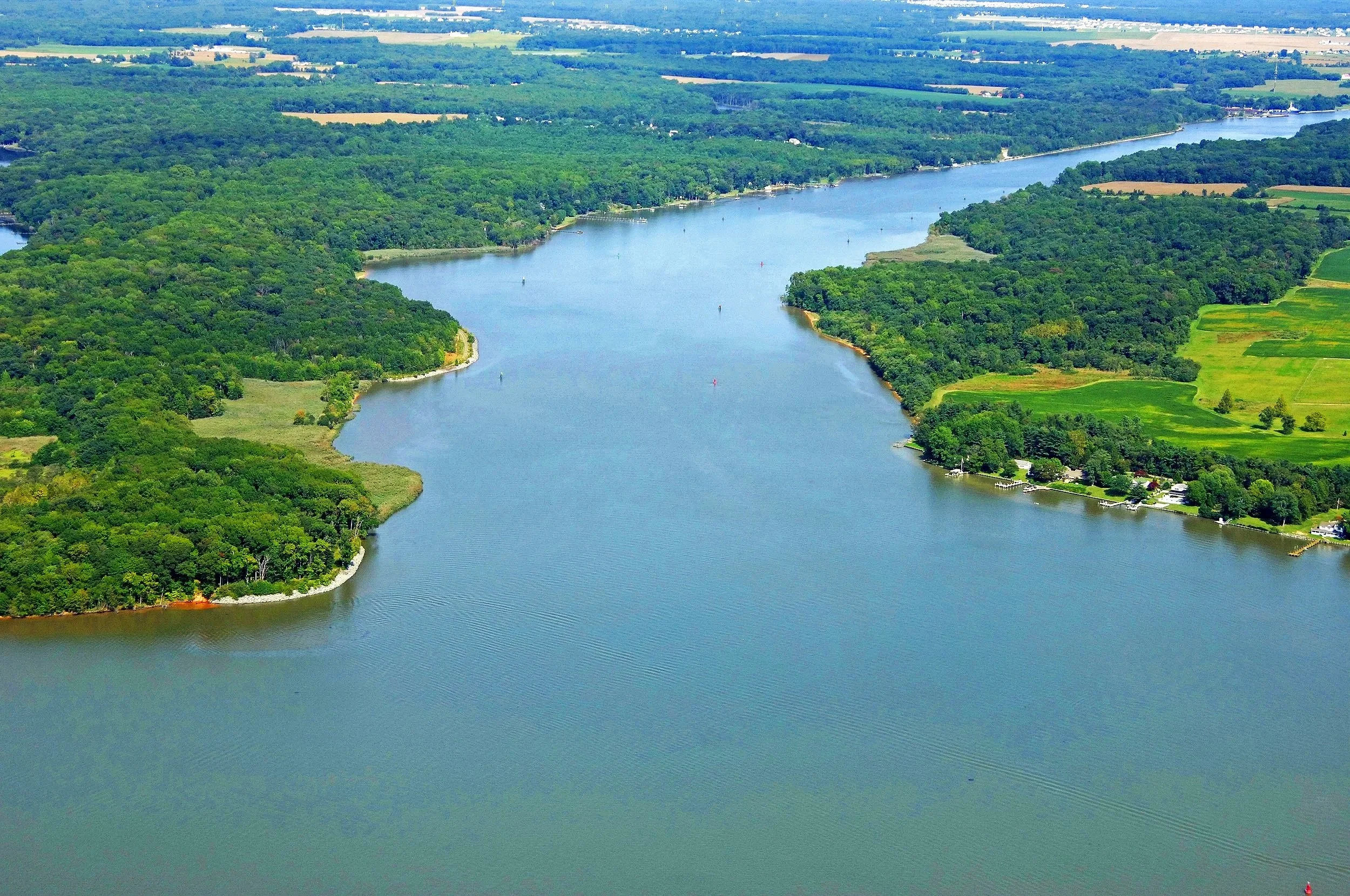The Chesapeake and Delaware Canal
The Chesapeake and Delaware Canal is a remarkable engineering achievement, linking the Chesapeake Bay with the Delaware River and serving as a major route for both commercial and recreational vessels. Spanning 14 miles, it dramatically shortens the journey between Baltimore and Philadelphia by nearly 300 miles, making it an essential corridor for maritime traffic along the Atlantic Intracoastal Waterway. If you’re exploring the Northern Chesapeake Bay, few places capture its maritime spirit quite like the Chesapeake & Delaware Canal. From the western part of the canal located at the Elk River, Maryland to the eastern part of the canal located adjacent to Delaware City, Delaware, this historic waterway connects two great waterways—the Delaware River and the Chesapeake Bay. It offers sailors and travelers an unforgettable passage through the heart of America’s coastal heritage.
For modern travelers, the canal is much more than a route—it’s an experience. A sailing charter that includes a visit through the C&D Canal is a chance to see working ships up close, drift past grassy banks and forests, and watch the silhouettes of towering bridges rise against the horizon.
A weekend-long or multi-day sailing trip with a stop in the canal offers a rare combination of tranquility and spectacle. You’ll share the waterway with massive ships bound for distant ports, glide past grassy embankments and forested shores, and observe the the beauty of the engineered bridges like the Chesapeake City Bridge that cross over the canal.
Many sailing itineraries include a peaceful night anchored or docked in engineers cove located in Chesapeake City where you can fall asleep to the gentle hum of passing vessels and wake to a sunrise spilling across the Northern Chesapeake. From there, it’s an easy sail west toward Havre de Grace, Rock Hall, or Georgetown, each offering quiet harbors, historic charm, and authentic Chesapeake flavor. Chesapeake City has several good restaurant including The Chesapeake Inn and Restaurant.
The idea for a canal connecting these two waterways dates to the 17th century, with Dutch settler Augustine Herman recognizing the economic and logistical potential of a shortcut across the Delmarva Peninsula. Construction finally began in earnest in 1824, and by 1829, the original canal was completed. This first version was 10 feet deep and 66 feet wide, equipped with a system of locks to raise and lower vessels along its route.
In its early era, the canal was operated with locks and served as a toll canal, helping transport goods such as lumber, coal, and agricultural products between the bays. Mules and horses once towed boats through the waterway. As commercial demands grew and ships became larger, the canal underwent a series of expansions: it was deepened, widened, and converted to a sea-level canal without locks by 1927, making it more accessible to larger vessels and easing navigation. Today, the canal is 450 feet wide and 35 feet deep, able to accommodate some of the largest ships on the East Coast. Of course plenty of recreational boats and sailing charter vessels transit the canal as well.
The canal is managed by the U.S. Army Corps of Engineers and features several major fixed bridges, including the Chesapeake City Bridge and Summit Bridge, allowing uninterrupted passage for marine and road traffic. The canal runs through scenic landscapes, grassy banks, and the historic town of Chesapeake City, which arose along the canal’s edge to support shipping and transportation needs. Today, Chesapeake City also serves as a favorite stopover for sailing trips and charter excursions, where visitors can dock, dine, and explore before continuing toward the upper Chesapeake Bay or Delaware River.
As the only 19th-century American canal still functioning as a major shipping route, the Chesapeake and Delaware Canal has played a crucial role in the region’s development. It serves as a crucial artery for trade. Today, its purpose has evolved, alongside commercial vessels, it supports a thriving recreational boating community. Sailing charters and private trips along the canal allow visitors to appreciate its dual identity—both as a working waterway and a peaceful passage into the heart of the Chesapeake connecting communities and shaping regional culture. For modern travelers, the canal is much more than a route—it’s an experience.
Visitors interested in maritime history can explore the C&D Canal Museum in Chesapeake City. The canal, though designed for industry, now draws pleasure craft, sightseers, and sailors intrigued by its blend of historical significance and modern utility. For history lovers, the C&D Canal Museum in Chesapeake City offers an in-depth look at the canal’s construction, original steam pumps, and the lives of those who built and maintained it. Sailors and travelers can watch commercial ships sail by, spot bald eagles along the banks, and take in the seamless blend of history and natural beauty that defines the Chesapeake & Delaware Canal. It’s an unforgettable waypoint in any exploration of the Northern Chesapeake Bay—a place where America’s maritime past and present truly meet. It marks a perfect apex as part of a Northern Chesapeake Bay adventure on a weekend or overnight cruise.
Curious about exploring the Chesapeake Bay during the summer? Give us a call and we will help you satisfy your curiosity.




